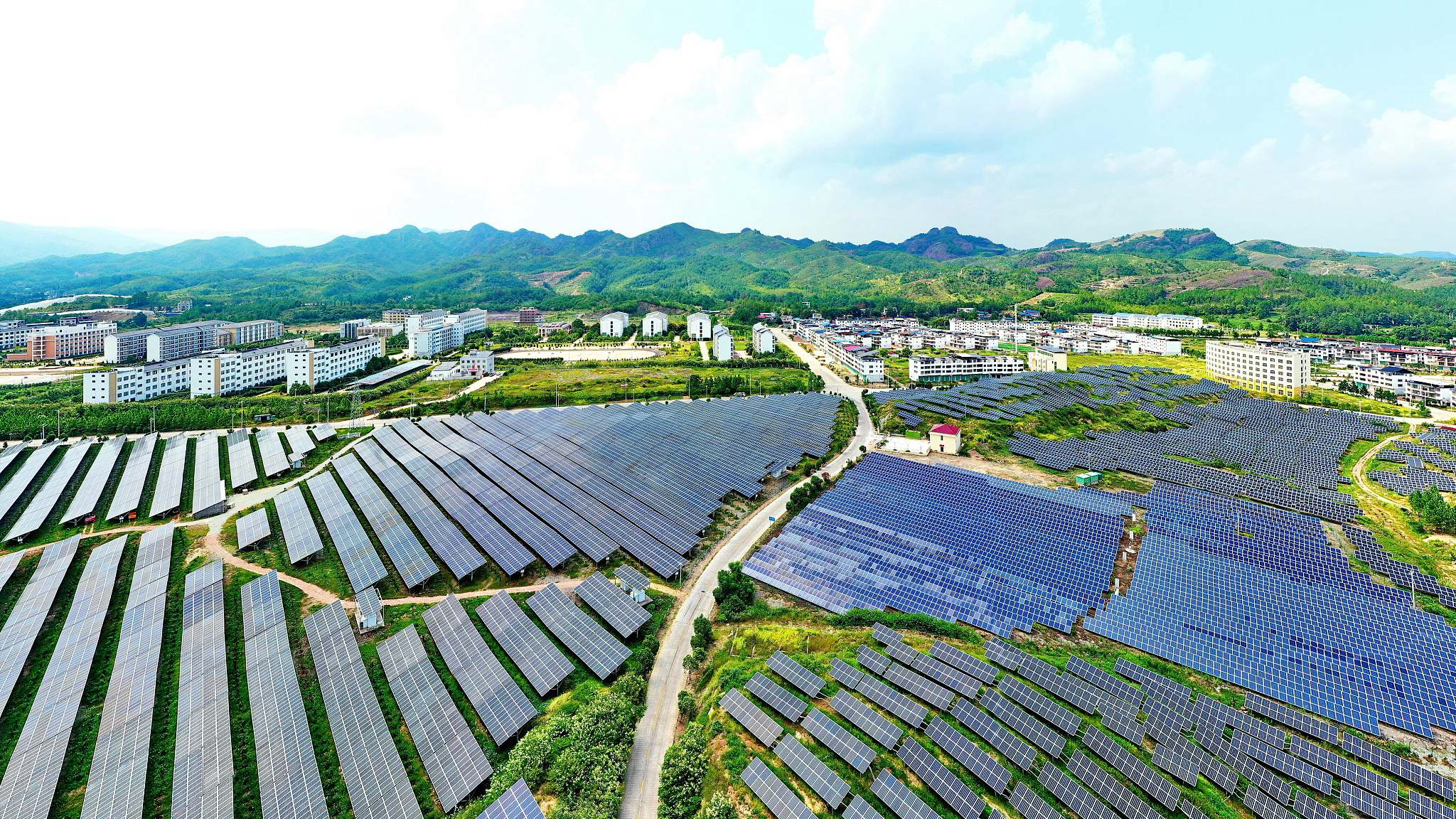
Editor's note: Decision Makers is a global platform for decision-makers to share their insights on events shaping today's world. Chai Qimin is the director of Strategy and Planning Department in National Center for Climate Change Strategy and International Cooperation. The article reflects the author's opinions and not necessarily the views of CGTN.
The global economy is experiencing a new round of industrial, energy and technological revolution. The new growth pathway characterized by smart, green and low-emission development has emerged as the primary direction of global transformation. Peaking carbon emission before 2030 and achieving carbon neutrality before 2060 are the key strategic decisions made out of China's deliberation, which is a broad and profound evolution in the socioeconomic system. The goals are matters of China's sustainable development and its efforts to contribute to the global community of shared future for mankind.
China leads global green investment
As the largest developing country, China faces major challenges across a range of important areas, including economic development, improving people's lives, pollution control and eco-environmental protection. China has made positive progress in implementing its national strategy of actively responding to climate change through a variety of strategies, regulations, policies, standards and actions on green industries, new power system, energy efficiency, market mechanisms and carbon sinks.
Preliminary statistics show that China's carbon dioxide emissions per unit of GDP in 2020 reduced by 18.8 percent and 48.4 percent compared with figures in 2015 and 2005, respectively, exceeding the binding target of 18 percent set in the 13th Five-Year Plan and the target of 40 to 45 percent reduction by 2020 compared with 2005. The share of non-fossil energy in energy consumption reached 15.9 percent, exceeding the target of increasing it to around 15 percent by 2020. China's forest area and forest stock reached 220.7 million hectares and 17.56 billion cubic meters, 41.1 million hectares and 4.5 billion cubic meters more than in 2005, respectively, making China the country with the largest increase in forest resources in the world during the same period. Positive progress has also been made in controlling non-carbon greenhouse gas emissions, an alliance of Chinese oil and gas enterprises was set up to advance methane emission control across the industry chain, and the Kigali Amendment to the Montreal Protocol has been accepted.
China has become the world's largest investor in energy transition during the past decade with an investment of $134.8 billion in 2020, accounting for 26.9 percent of global total. China's installed or planned renewable energy capacity and power generation have been the world's largest; wind and solar PV power installations accounted for 38.5 percent and 35.8 percent of the global totals, respectively. In July 2021, China launched its national carbon market trading, which is expected to be potentially the largest carbon market in the world in coming years.
An earlier and lower carbon emissions peak than in developed economies
In October 2021, China submitted the Mid-Century Long-Term Low Greenhouse Gas Emission Development Strategy and updated First Nationally Determined Contributions to the secretariat of United Nations Framework Convention on Climate Change. China will scale up its Intended Nationally Determined Contributions by adopting more vigorous policies and measures, and will lower its carbon dioxide emissions per unit of GDP by over 65 percent from the 2005 level, increase the share of non-fossil fuels in primary energy consumption to around 25 percent, increase the forest stock volume by 6 billion cubic meters from the 2005 level, and bring its total installed capacity of wind and solar power to over 1200 GW by 2030, which may exceed the entire power capacity of the United States.

A photovoltaic power generation station in a village in east China's Jiangxi Province. /CFP
A photovoltaic power generation station in a village in east China's Jiangxi Province. /CFP
China will achieve the most ambitious reduction in carbon intensity before 2030 and achieve carbon neutrality in the shortest time before 2060 in the history of the world. When China reaches its peak, its GDP per capita and carbon emissions per capita will be lower than those of the United States, Europe and other developed countries. This is China's positive contributions to mitigate the global climate change, and potentially provides a reference for other developing countries to achieve sustainable green transition.
China will make greater efforts to promote a revolution in energy production and consumption, so that a clean, low-carbon, safe and efficient energy system can be fully established by 2060, with non-fossil energy consumption accounting for more than 80 percent of the total. China will accelerate high-quality economic and social development and achieve green and low-carbon transformation in the major sectors of industry, building, transportation and consumption. According to our modelling study, achieving China's carbon peak and neutrality would require about $21 trillion in new investment. China will also step up support for other developing countries in developing green and low-carbon energy, and will not build new coal-fired power projects abroad as announced officially.
Joint 'real action' to new growth pathway
The COVID-19 outbreak has further proved that the world swims or sinks together and is a community of shared future for mankind. No country can alone address this severe challenge. The global action on climate change under the Paris Agreement needs not only to be guided by targets, but also to be implemented with high quality.
A global consensus on the new growth story needs to be forged on the basis of openness, mutual trust and win-win solution. Practical cooperation among countries is more required instead of the narrow mindset of zero-sum game and empty talk of "ambition."
The achievement of the carbon neutrality requires the efforts of several generations. China now is ready on the new journey to boost green technological innovation and industrial development, provide high-quality public products for global ecological security, and share the green benefits from low-carbon transition as a responsible torchbearer in the global community.
(If you want to contribute and have specific expertise, please contact us at opinions@cgtn.com.)

